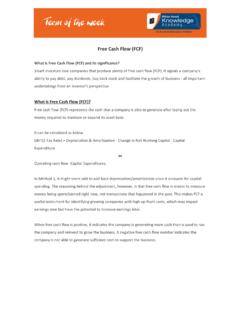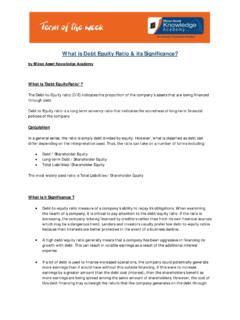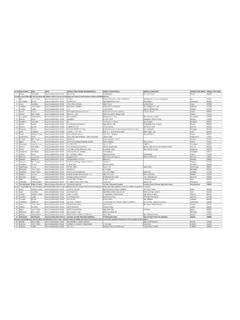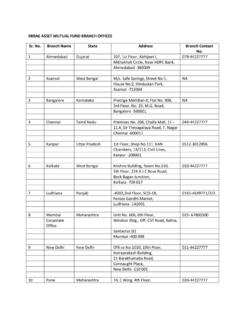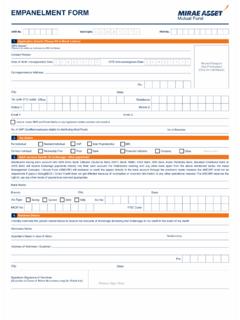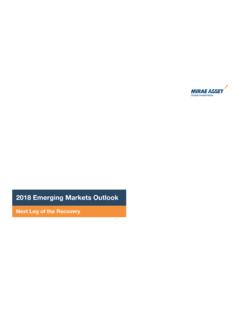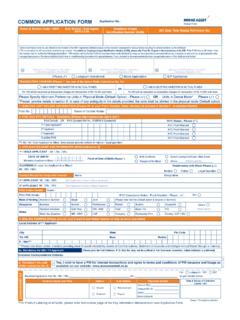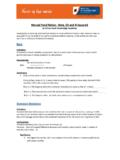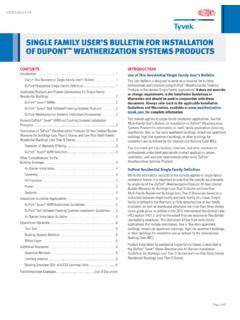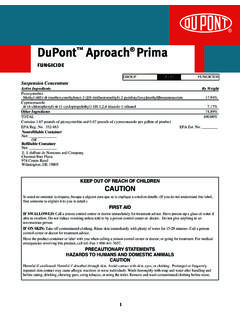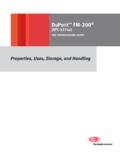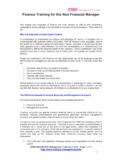Transcription of Return on Equity - ROE
1 Return on Equity - ROE. What is ROE & it's significance: ' Return On Equity - ROE' - The amount of net income returned as a percentage of shareholders Equity . Return on Equity measures a corporation's profitability by revealing how much profit a company generates with the money shareholders have invested. ROE is expressed as a percentage and calculated as: Return on Equity = Net Income/Shareholder's Equity Net income is for the full fiscal year (before dividends paid to common stock holders but after dividends to preferred stock.) Shareholder's Equity does not include preferred shares.
2 The ROE is useful for comparing the profitability of a company to that of other firms in the same industry. There are several variations on the formula that investors may use: 1. Investors wishing to see the Return on common Equity may modify the formula above by subtracting preferred dividends from net income and subtracting preferred Equity from shareholders' Equity , giving the following: Return on common Equity (ROCE) = net income - preferred dividends / common Equity . 2. Return on Equity may also be calculated by dividing net income by average shareholders' Equity .
3 Average shareholders' Equity is calculated by adding the shareholders' Equity at the beginning of a period to the shareholders' Equity at period's end and dividing the result by two. 3. Investors may also calculate the change in ROE for a period by first using the shareholders' Equity figure from the beginning of a period as a denominator to determine the beginning ROE. Then, the end-of-period shareholders' Equity can be used as the denominator to determine the ending ROE. Calculating both beginning and ending ROEs allows an investor to determine the change in profitability over the period.
4 How Should ROE Be Interpreted? ROE offers a useful signal of financial success since it might indicate whether the company is growing profits without pouring new Equity capital into the business. A. steadily increasing ROE is a hint that management is giving shareholders more for their money, which is represented by shareholders' Equity . ROE is, in effect, a speed limit on a firm's growth rate, which is why money managers rely on it to gauge growth potential. In fact, many specify 15% as their minimum acceptable ROE when evaluating investment candidates. Shortfalls in ROE.
5 Suppose that two firms have the same amount of assets ($1,000) and the same net income ($120) but different levels of debt: Firm A has $500 in debt and therefore $500 in shareholder's Equity ($1,000 - $500) and Firm B has $200 in debt and $800 in shareholder's Equity ($1,000 - $200). Firm A shows an ROE of 24% ($120/$500) while Firm B, with less debt, shows an ROE of 15%. ($120/$800). As ROE equals net income divided by the Equity figure, Firm A, the higher-debt firm, shows the highest Return on Equity . This company looks as though it has higher profitability when really it just has more demanding obligations to its creditors.
6 Its higher ROE may therefore be simply a mask of future problems. For a more transparent view that helps you see through this mask, make sure you also examine the company's Return on invested capital (ROIC), which reveals the extent to which debt drives returns. Things to Remember If new shares are issued then use the weighted average of the number of shares throughout the year For high growth companies you should expect a higher ROE. Averaging ROE over the past 5 to 10 years can give you a better idea of the historical growth ROEs between 15% and 20% are generally considered good.
7 The dupont Formula The dupont formula, also known as the strategic profit model, is a common way to break down ROE into three important components. Essentially, ROE will equal the net margin multiplied by asset turnover multiplied by financial leverage. Splitting Return on Equity into three parts makes it easier to understand changes in ROE over time. For example, if the net margin increases, every sale brings in more money, resulting in a higher overall ROE. Similarly, if the asset turnover increases, the firm generates more sales for every unit of assets owned, again resulting in a higher overall ROE.
8 Finally, increasing financial leverage means that the firm uses more debt financing relative to Equity financing. Increased debt will make a positive contribution to a firm's ROE only if the matching Return on assets (ROA) of that debt exceeds the interest rate on the debt.
